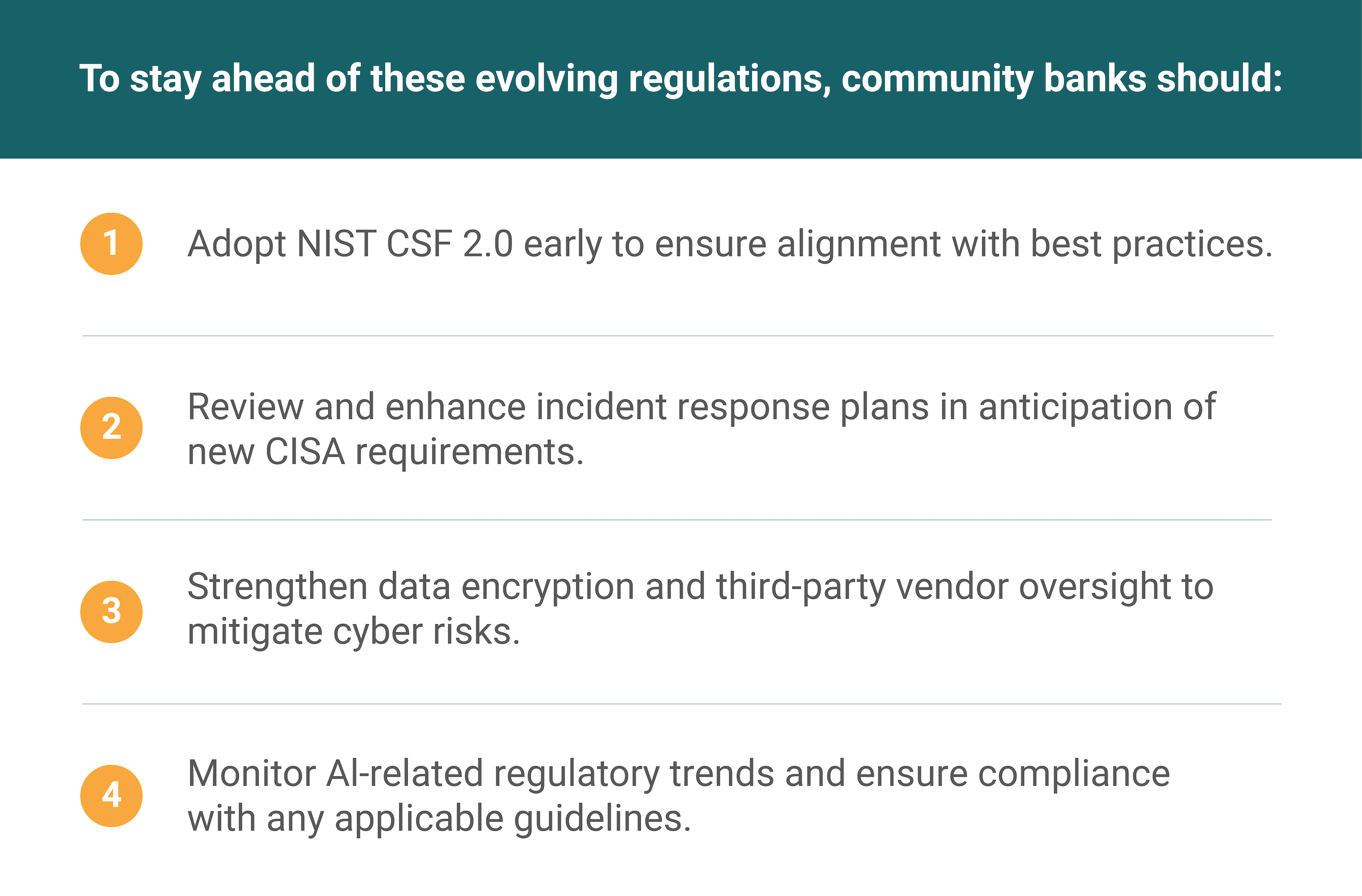
Key IT & Cybersecurity Regulations for Community Banks
Community banks face increasing regulatory scrutiny in the realm of IT and cybersecurity, with several key updates shaping the compliance landscape in 2025. From transitioning to new cybersecurity frameworks to enhanced incident response protocols, staying ahead of these changes is critical to maintaining security and regulatory compliance. Here’s what your community bank needs to have on its radar.
Transition to NIST Cybersecurity Framework 2.0
The NIST Cybersecurity Framework (NIST CSF) 2.0 is set to replace the FFIEC’s Cybersecurity Assessment Tool (CAT), signaling a shift in how banks approach cybersecurity risk management. Early adoption is encouraged as this framework provides an updated and more adaptable approach to identifying, protecting, detecting, responding to, and recovering from cyber threats.
CISA’s NCIRP Updates
The Cybersecurity and Infrastructure Security Agency (CISA) is updating the National Cyber Incident Response Plan (NCIRP), with advocacy from the Independent Community Bankers of America (ICBA) to ensure community banks are included. The revised plan aims to harmonize incident response requirements with regulations from the Federal Reserve, OCC, and FDIC, which could mean tighter reporting timelines and enhanced coordination during cybersecurity incidents.
Strengthened Data Encryption and Third-Party Risk Management
Emerging compliance mandates emphasize data encryption, incident response protocols, and third-party risk management. Regulators expect banks to have robust encryption methods to protect customer data and clear policies in place for managing cybersecurity risks related to third-party vendors. Failure to comply could result in penalties and reputational damage.
AI-Related Cybersecurity Risks and New York DFS Guidelines
The New York Department of Financial Services (DFS) has issued new guidance on AI-related cybersecurity risks, mandating annual risk assessments, updated incident response plans, and multi-factor authentication implementation by November 2025. While this applies directly to banks under DFS jurisdiction, it signals a broader trend of regulatory focus on AI-driven cybersecurity threats, which could lead to similar mandates at the federal level.
What Your Community Bank Should Do Now

Leverage a Trusted Partner
Cyber threats continue to evolve, and regulatory expectations are rising to match. By taking proactive steps now, community banks can safeguard their operations, protect customer data, and maintain compliance with confidence. The financial landscape is rapidly changing, but with the right strategies in place, community banks can turn these regulatory challenges into opportunities for strengthening security and resilience.
Connect with the CSC IT & Cybersecurity Team to learn more about how we can support your institution.



